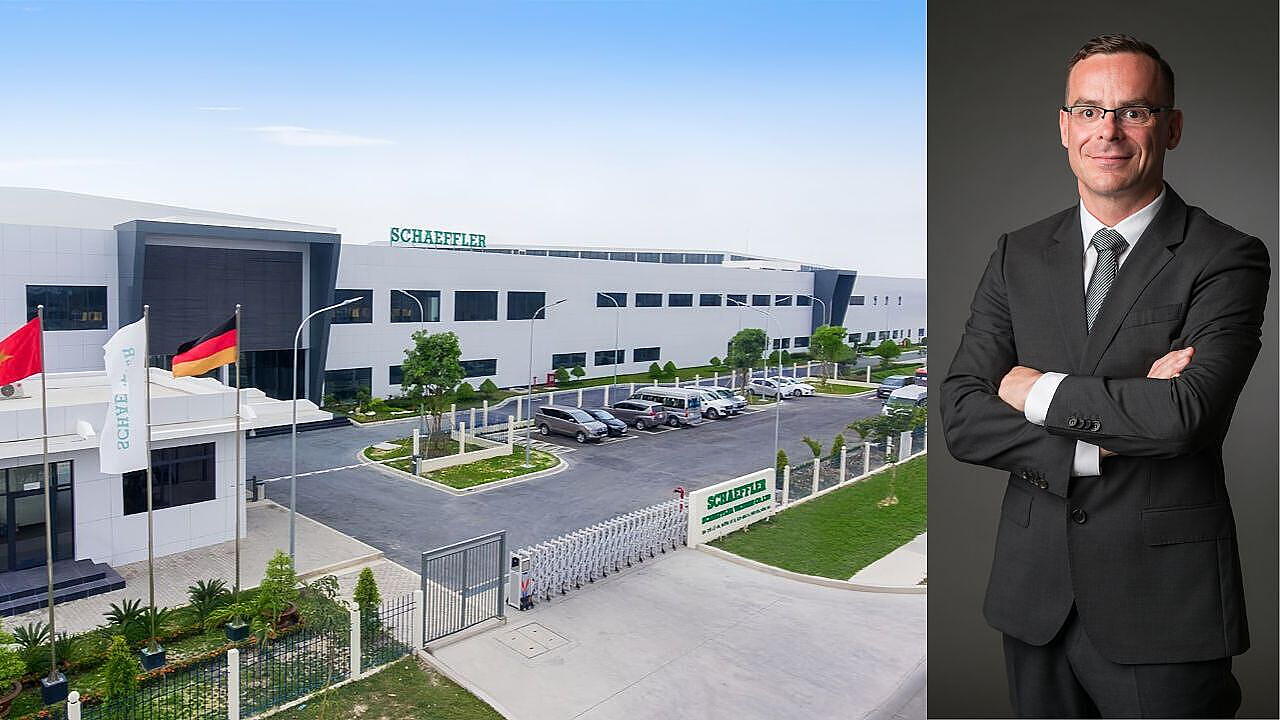
Digitalisation of factories and organisational structures is not merely a technological upgrade but a strategic enhancement that aligns business operations with contemporary digital practices. The Schaeffler Group, which has been driving groundbreaking inventions and developments in the field of motion technology for over 75 years, has pioneered the digitalisation of its manufacturing operations. It has focused on its plant in Vietnam for this project.
To explain why the global company chose Vietnam for its digitalisation initiative, Klaus Mueller, COO of Schaeffler Asia Pacific, told Mobility Outlook that Schaeffler's decision stemmed from strategic discussions within the company to significantly expand its digital footprint. The company has long been integrating digital solutions across various environments, including office, finance, administration, and production. Despite over 20 years of experience incorporating algorithms and measurement systems into their custom-built machines, the company sought a holistic approach to digital transformation across its entire manufacturing footprint.

In 2019, Scheffler opened a new greenfield factory in Vietnam, making it an ideal location for a digital pilot project. Unlike existing factories in Europe and America, which were more suited for brownfield digital initiatives, the new Vietnam plant provided a clean slate to implement standardised, scalable digital solutions from scratch. This approach aimed to develop solutions that could be expanded across Scheffler's network of approximately 80 factories worldwide.
Advantage Vietnam
According to Mueller, Vietnam offered several advantages as a pilot location. The country has a growing population and significant foreign direct investment, creating a dynamic business environment. The young, tech-savvy population, familiar with digital technologies in their daily lives, facilitated rapid adaptation to new digital processes. Additionally, the country’s ecosystem of startups, universities, and research companies provided a robust support system for innovation.
Scheffler's digital transformation in their Vietnam plant began with a comprehensive plan focused on connectivity and infrastructure, taking about a year to establish a robust digital foundation. This involved setting up software, server infrastructure, cabling, and programmes in collaboration with Microsoft Azure. The next phase, connecting 99% of their machines to this infrastructure for real-time data projection, also took approximately a year. Following this, the focus shifted to data harmonisation, clustering, and correction, a process requiring another one and a half years. This phase involved cleaning and organising data to make it usable and scalable across the company’s global network, including plants in Europe, America, China, and India.
The final phase centered on utilising this data to generate new insights. Through advanced algorithms and big data analysis, the Tier-1 company aimed to uncover patterns and clusters, transforming raw data into valuable information. This ongoing process continues to evolve with technological advancements, ensuring continuous learning and value creation.
Overall, while the initial phases of infrastructure setup and data cleaning took around three years, the process of leveraging data for innovation is continuous and ever-evolving. This approach has exponentially increased the speed, learning, and value Scheffler can create from its digital initiatives, Mueller explained.
Scheme Of Implementation
Scheffler’s digital transformation began with digitising the factory shopfloor, providing real-time feedback to operators, team leaders, and segment managers. The next step was integrating other departments like quality, maintenance, facilities, and supply chain logistics to ensure end-to-end synchronisation. This included coordinating incoming inspections, production schedules, and maintenance routines to prevent disruptions.

To achieve full transparency and synchronisation, the company connected all departments digitally. This success can lead to scaling the solution to other plants in Korea, India, Germany, and Romania. Additionally, Scheffler extended the approach to customers and suppliers, aiming to improve electronic data interchange (EDI) and transparency throughout the supply chain. Its strategy involves developing small, targeted applications for specific needs like quality control, supply chain logistics, and maintenance, rather than building a large, comprehensive system. This modular approach allows customisation based on the unique needs of each plant, ensuring effective change management and organisational transformation.
Customisation In Digitalisation
Digitalisation demands a customised approach for each location. While customers, suppliers, and markets may have similar requests, specific needs vary by region, influenced by technology, governance, and regulations. Digitalisation enhances transparency, compliance, and adaptability through data management, he pointed out.
Each customer requires tailored solutions, particularly in areas like traceability, which is crucial in the automotive industry and e-mobility sector. Digitalisation aids in tracking raw materials, sustainability metrics, and CO2 footprints, enabling the creation of precise reports and measures for optimisation.
While digitalisation frameworks may appear uniform, their application is highly customised to meet the unique needs of customers and the organisation, ensuring rapid and effective adaptation, Mueller concluded.
Also Read:
Schaeffler's Digitalization Strategy To Boost OEMs’ Productivity